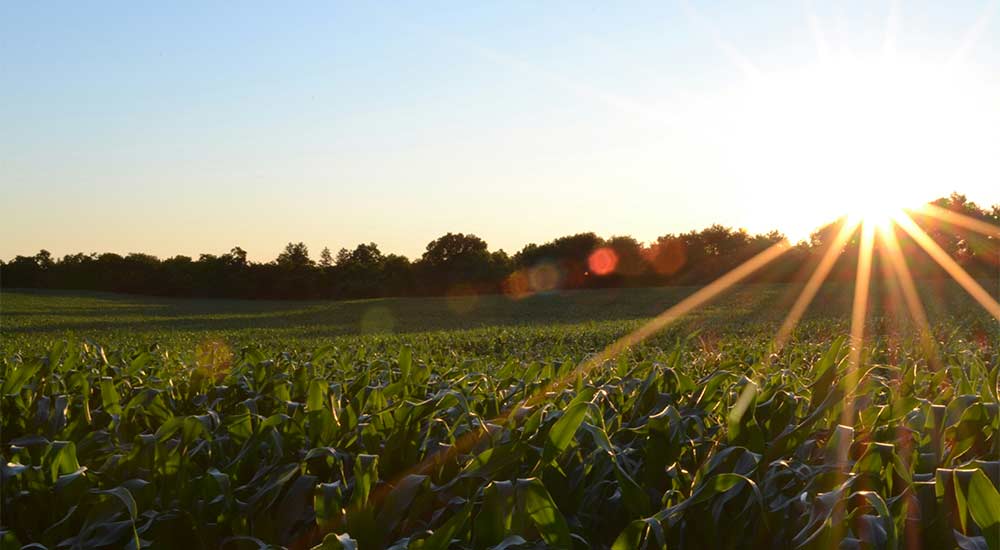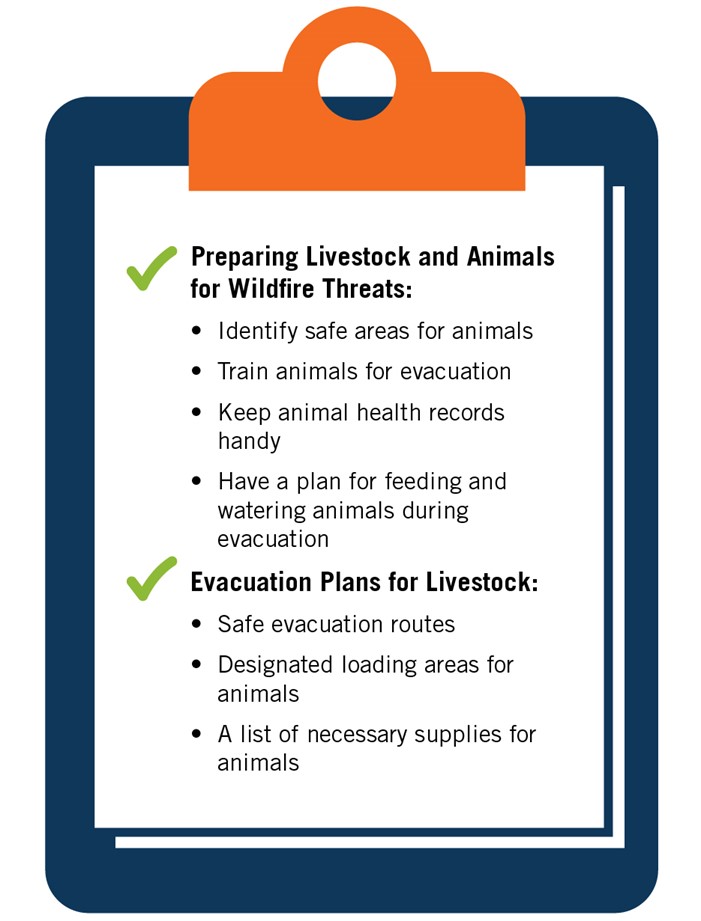Wildfire Preparedness for Farms and Ranches

According to data that is updated daily by the National Interagency Fire Center, wildfires are having major impacts across the country*:
- 29,313 wildfire incidents
- 5,211,246 acres burned
- 27,238 personnel assigned to wildfires
For farms and ranches in particular, wildfires can devastate properties, livestock, and livelihoods within a matter of hours. Yet, with the right preparation, the impact of these natural disasters can be mitigated. Creating a comprehensive wildfire protection plan, conducting a wildfire risk assessment and implementing safety measures can help change the outcome if a wildfire hits your area.
Understanding the Risks of Wildfires to Farms and Ranches
Wildfires can cause extensive damage to farms and ranches including destroying buildings, crops, and pastures, leading to significant financial losses. Livestock are also at risk. Wildfires can cause injury or death to animals, and smoke can lead to long-term health issues. Understanding these risks is the first step towards effective wildfire preparedness.
Creating a Wildfire Protection Plan
A wildfire protection plan is crucial for farms and ranches. It outlines the steps to take before, during, and after a wildfire to protect people, animals, and property. The plan should include strategies for creating defensible space around buildings and livestock areas. It should also detail how to maintain a clear perimeter around crops and pastures. Here are more details:
- Clear Vegetation: Remove vegetation that is close to buildings, fences, and livestock areas. This includes dry grass, shrubs, and trees. Maintaining a clear space helps prevent the fire from easily reaching the structures.
- Maintain Landscaping: Keep the landscaping well-maintained by regularly pruning trees and shrubs. Avoid planting highly flammable vegetation near buildings or near each other.
- Reduce Fuel Sources: Store firewood, flammable materials, and debris away from buildings. Clear fallen leaves, branches, and other combustible materials regularly.
- Create Fuel Breaks: Establish fuel breaks by having non-combustible materials like gravel or pavement around structures. This creates a barrier that can help slow down or stop the spread of fire.
- Manage Trees and Plants: Trim tree branches to keep them away from buildings and remove dead vegetation. Thin out vegetation to reduce the continuity of fuel that can carry fire.
- Keep Grass Short: Regularly mow and maintain grass around buildings and livestock areas. Short and well-watered grass is less likely to ignite and can act as a natural barrier against fire.
- Regular Inspections: Conduct regular inspections of the defensible space to ensure it is maintained and free from fire hazards. Address any issues promptly to keep the area safe.
- Collaborate with Neighbors: Coordinate with neighboring properties to create a cohesive defensible space plan. Continuous vegetation management across properties can enhance the overall protection against wildfires.
Assessing Your Property: The Wildfire Assessment Checklist

A wildfire assessment checklist is a key tool to identify potential fire hazards on your property. It helps you understand your property's vulnerability to wildfires. The checklist should include:
- Inspection of buildings for fire-resistant construction
- Evaluation of vegetation and landscaping for fire risk
- Assessment of storage and handling of flammable materials
- Review of access routes for emergency vehicles
- Understand firebreaks and their importance. Here's a breakdown from Western Fire Chiefs Association.
Preparing Livestock and Animals for Wildfire Threats
Livestock and animals are a vital part of many farms and ranches. Their safety during a wildfire is paramount:
- Identify safe areas for animals
- Train animals for evacuation
- Keep animal health records handy
- Have a plan for feeding and watering animals during evacuation
Evacuation Plans for Livestock
Creating an evacuation plan for livestock is crucial. This plan should include:
- Safe evacuation routes
- Designated loading areas for animals
- A list of necessary supplies for animals
Essential Components of an Emergency Kit
An emergency kit is a vital part of wildfire preparedness. It should be easily accessible and contain essential items. These include:
- First aid supplies
- Copies of important documents
- Emergency contact numbers
- Food and water supplies
- Tools and safety gear
Training and Communication Strategies
Training is a key aspect of wildfire preparedness. All farm and ranch personnel should be trained in emergency procedures. This includes understanding evacuation routes and knowing how to use fire safety equipment. Regular updates about wildfire threats should be shared with all staff and family members. This ensures everyone is informed and ready to act when necessary.
Collaborating with Local Emergency Services
Working with local fire departments and emergency services is vital. They can provide valuable advice and support in wildfire preparedness. Establishing a good relationship with these services can also ensure quicker response times during a wildfire event.
Post-Wildfire Recovery and Insurance Considerations
After a wildfire, recovery can be a daunting task. It's important to have a post-wildfire recovery plan in place. This plan should include soil conservation and erosion control measures. It's also crucial to properly dispose of debris and damaged materials.
Insurance plays a key role in recovery. It's important to maintain an inventory of all assets for insurance purposes. Regular updates to this inventory can ensure accurate coverage.
Consulting an insurance agent will also ensure you are sufficiently protected. They can provide valuable insights and recommendations. For additional resources, utilize local community workshops and training sessions. Online platforms also offer real-time wildfire tracking and updates. Stay informed, stay prepared, and stay safe.
*https://www.nifc.gov/fire-information/statistics

